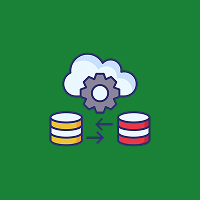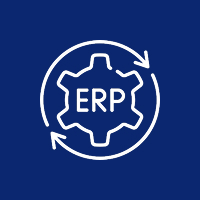Backing up large databases can be a challenge due to size and complexity, and the desire for minimal downtime. If backups are slow, they are not only cumbersome, but can also be more costly and risk losing data. Optimizing backup performance will keep large databases safe, accessible, and manageable without impacting performance levels.
1. Know Your Database Size and Structure
- Prior to optimizing backups, it is important to examine the database.
- Know which tables, indexes, and blobs are large enough to affect backup time.
- Know the data growth to prepare for a backup that can be handled.
- Use the database performance monitoring tools to view performance and identify slow offense.
Tip: Segmenting data based on size or activity can improve backup time and performance.
2. Select the Right Backup Type
Backups behave differently the affect the performance.
- Full Backup: Backing up everything will take the longest back up time, especially for large data.
- Incremental Backup: Backing up only what has changed since last backup requires less space and less back time.
- Differential Backup: Backing up everything that has changed since last full back up is a balance of speed and coverage.
- Snapshot Back up: Backing up the database state provides an image at a point in time. Even though it is an image, this backup has minimal downtime.
- Recommendation: Consider a combination of full and incremental to minimize storage requirements and speed of backups.
3. Use Compression and Deduplication
Compression reduces the size of backup files, while deduplication eliminates redundant data.
- Enable backup compression to take up less disk space.
- Use deduplication tools to avoid storing two versions of the same block.
- Make sure your database engine provides compression without hurting performance
Example: SQL Server and Oracle provide native backup compression for large databases.
4. Backups should be Automated and Scheduled
Backups done manually are prone to problems. No one wants inconsistent and unreliable backups. Automation assures:
- Consistent, reliable backups on your chosen schedule
- Scheduling around off-peak periods to minimize effect on the system
- Integration with monitoring systems that provide alerts in case there are problems during backup.
Quick tip: Schedule backups during non-peak times to reduce competition for resources.
5. Utilize Fast Storage
The speed of backing up and restoring is reliant on the speed of the storage.
- Use fast storage options, for example, SSD, for the actual backups.
- Consider network-attached storage (NAS), or storage area networks (SAN), for very large databases on enterprise networks.
- Distributing backups across multiple physical disks or machines can also reduce back-ups.
Example: Using high-speed storage can reduce the time of creating a full backup from hours to minutes for multi-terabyte databases.
6. Regularly Monitor and Test Your Backups
Backups are only effective if they can be restored accurately, and quickly.
- Perform periodic test restores to ensure the integrity of your backup.
- Keep an eye on the times and performance trends of your backups for an opportunity to optimize.
- Make sure to track logs of jobs, it will help determine when jobs may have failed or were excessively slow.
7. Use Cloud or Hybrid Backup Solutions
Cloud or hybrid solutions can offer the chance for cost reduction and scalability.
- Cloud storage for backups or disaster recovery can be used off site.
- Incremental backups to the cloud will consume less bandwidth.
- Backup using a hybrid solution, or both local and cloud, to increase speed and redundancy.
Example: AWS, Azure, and Google Cloud provide optimization for database backups to serve up large datasets.
8. Take Advantage of Database-Specific Optimization Features
Many modern databases have features to improve backup efficiencies.
- Partitioning: allows the ability to backup partitions that are active to process quicker.
- Parallelism: Enable backups to process in multi-threading which can reduce time.
- Change tracking: Tracks only data that has changed for incremental backups.
Tip: If applicable, look at your documentation to explore your database options.
Conclusion
Maximizing backup efficiency for large databases requires a combination of strategic planning, automation, storage optimization, and testing. By understanding your database, selecting the right backup methods, using compression, leveraging automation, and testing restores regularly, organizations can ensure fast, reliable, and secure backups.
Efficient backups not only protect critical business data but also minimize downtime, reduce costs, and support scalable database management in enterprise environments.
Contact Us Today













 Database Development
Database Development












































